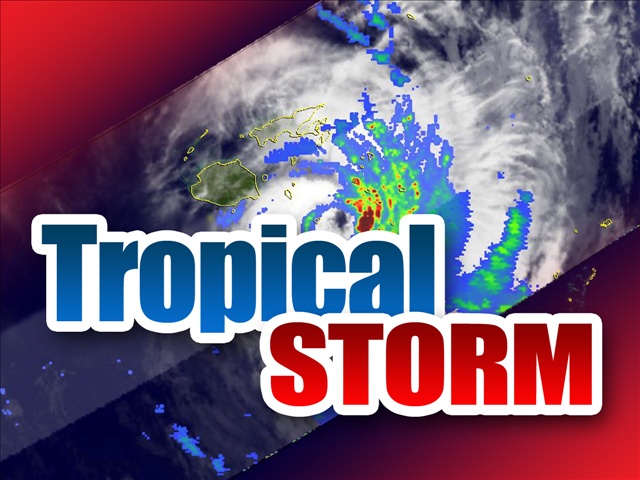By Paola Pérez and Lynnette Cantos Orlando Sentinel
ORLANDO, Fla. _ Tropical Storm Gamma dropped down from its original hurricane prediction as it moved closer to the Yucatan Peninsula, while the National Hurricane Center continued to monitor three other tropical waves on Saturday evening.
As of 5 p.m. EDT, Gamma was located about 35 miles north-northwest of Tulum, Mexico, with tropical-storm-force winds extending outward up to 80 miles from the center. Gamma has moved inland over the northeastern Yucatan Peninsula and this motion should continue at a slower forward speed today, forecasters said.
The government of Mexico has changed the Hurricane Warning to a Tropical Storm Warning for the east coast of the Yucatan Peninsula from north of Punta Allen to Cancun, including Cozumel, according to the NHC’s latest advisory.
A tropical storm watch is in effect for west of Dzilam to Progreso, Mexico, and the government of Mexico discontinued all watches and warnings from Punta Allen southward.
Maximum sustained winds for Gamma downgraded to near 65 miles per hour, moving northwest at 8 mph with decreasing forward speed expected for Saturday night and Sunday, NHC forecasters said. The storm is expected to turn to the west or west-southwest of the Yucatan Peninsula Sunday night or Monday.
“On the forecast track, the center of Gamma will continue to move over the northeastern Yucatan Peninsula through tonight, move into the southern Gulf of Mexico on Sunday, and pass near or north of the northern coast of the Yucatan Peninsula Sunday night and Monday,” said senior hurricane specialist Richard Pasch.
Tropical Storm Gamma formed out of Tropical Depression 25 Friday night off Mexico’s Yucatan Peninsula, becoming the 24th named storm of a busy hurricane season.
Gamma is the third storm of the hurricane season to rely on the Greek alphabet after having already blown through the 21 designated storm names plus Subtropical Storm Alpha and Tropical Storm Beta.
The hurricane season runs through Nov. 30, and there’s a chance it could become the busiest season on record, topping the 27 named storms of the 2005 season. That season saw 31 systems overall including unnamed tropical depressions.
Gamma is expected to produce 4-8 inches of rainfall with some isolated areas of 12 inches in both the Yucatan and far western Cuba, the NHC said. A separate area of rain is expected to develop away from the center and to the west in the Mexican states of Campeche, Tabasco, and northern Chiapas, with potential for rainfall up to 20 inches.
“This rainfall may produce life-threatening flash floods and mudslides,” Pasch said.
The NHC is also tracking three other systems with potential to form into tropical systems.
First, a tropical wave farther east in the Caribbean is producing a large area of disorganized showers and thunderstorms with heavy rain and gusts already affecting portions of Hispaniola, Jamaica, Cuba, and the Cayman Islands, according to the latest 2 p.m. advisory. It is forecast to move west-northwest at 15 mph into the central and western Caribbean, later into the southern Gulf of Mexico.
“Environmental conditions are expected to become more conducive for development, and a tropical depression could form next week,” NHC forecaster Jack Beven said.
It has a 30% chance of forming into either a tropical depression or tropical storm in the next two days, and 60% chance in the next five.
Neither Gamma nor the first tropical wave is expected to directly impact Florida but could bring rain to the state.
A second tropical wave is producing disorganized showers and thunderstorms over the central tropical Atlantic, based on NHC reports. It may slowly develop as it continues to move toward the west-northwest or northwest at 10 to 15 mph.
It remains a 20% chance of forming in the next two to five days before it runs into upper-level winds, the NHC said.
And third, forecasters are tracking an area of disorganized showers and thunderstorms over the central Atlantic, more than 1,000 miles east-southeast of Bermuda. It has the potential to slowly develop over the next few days before it also encounters upper-level winds; its chances of formation in the next two to five days are low at 10%.





